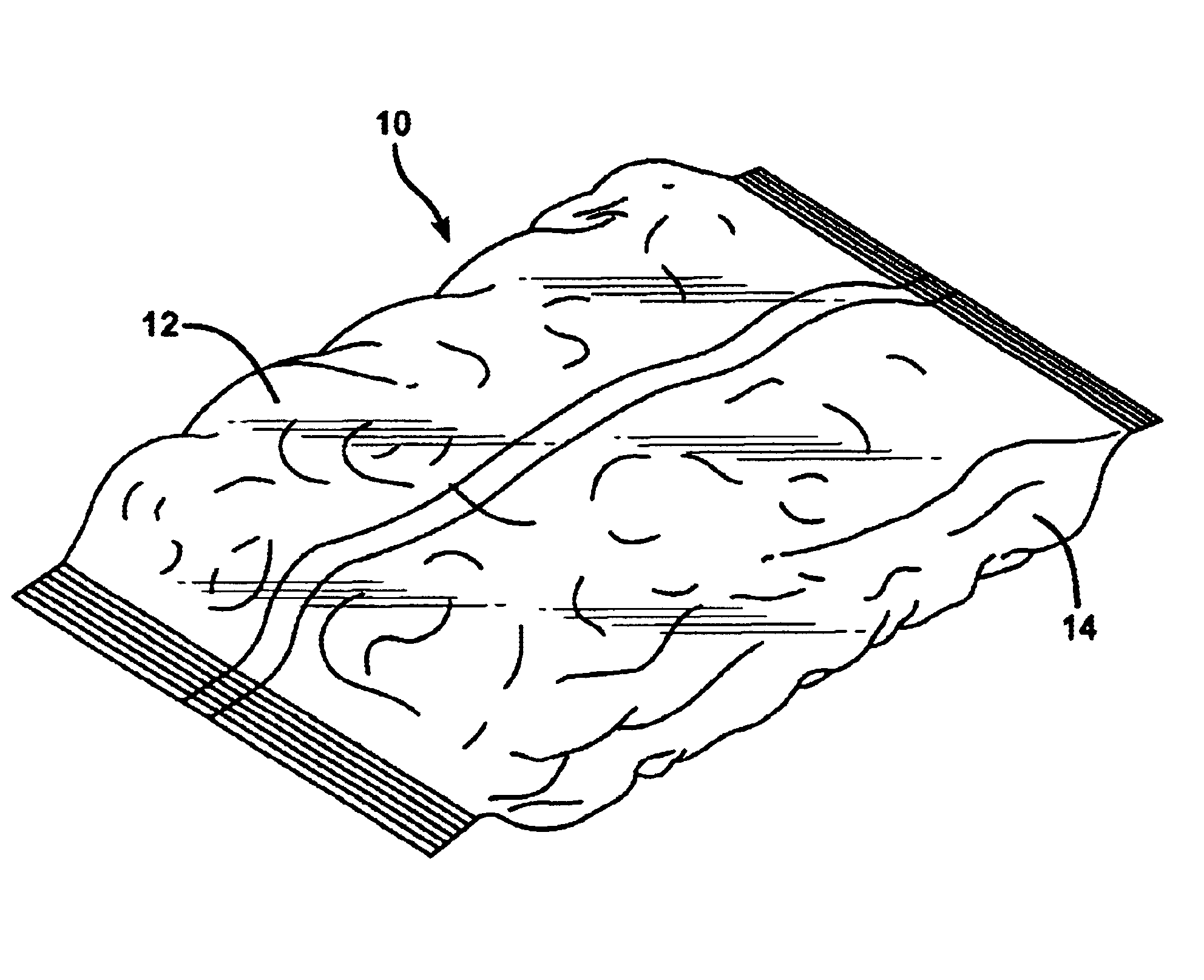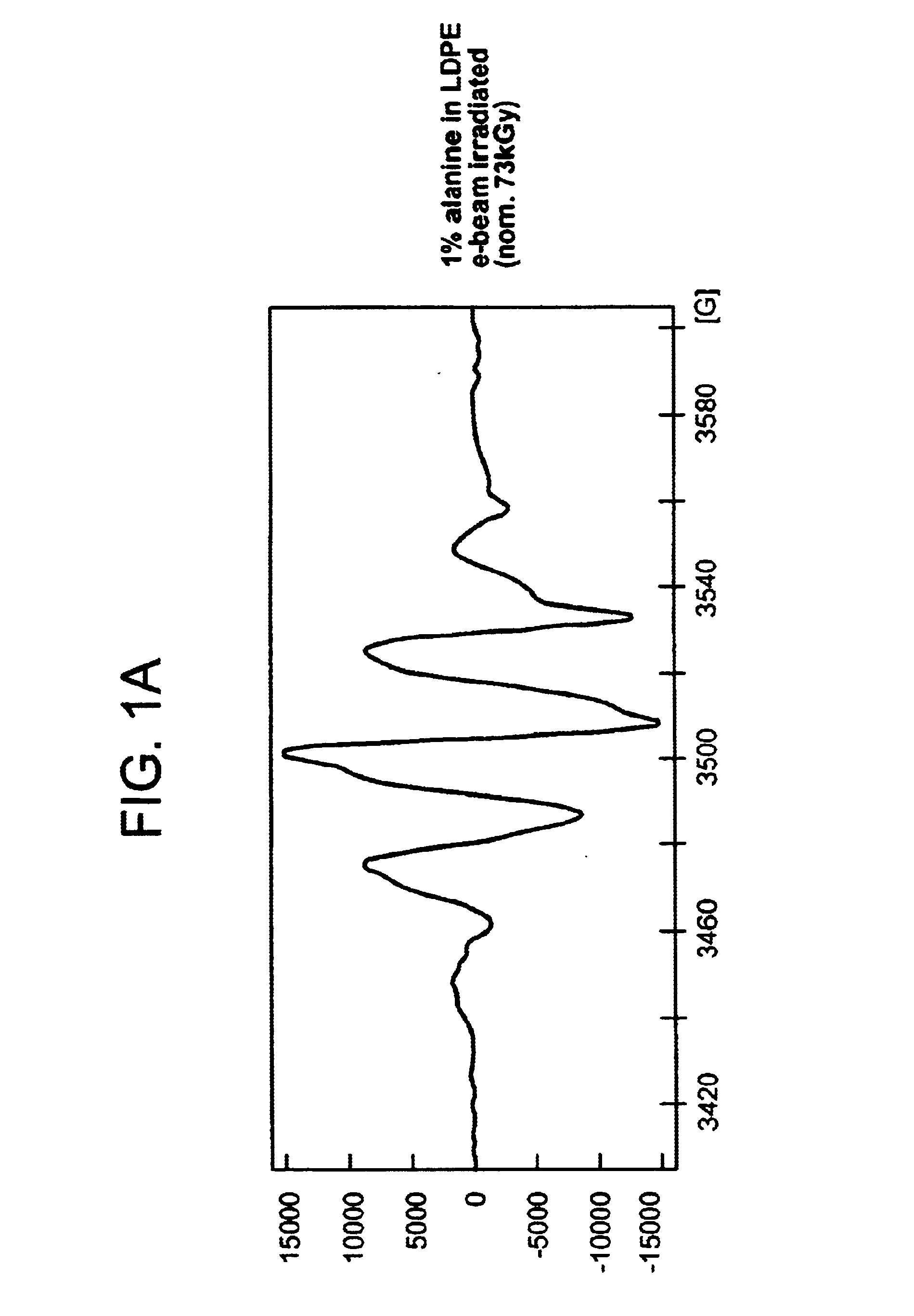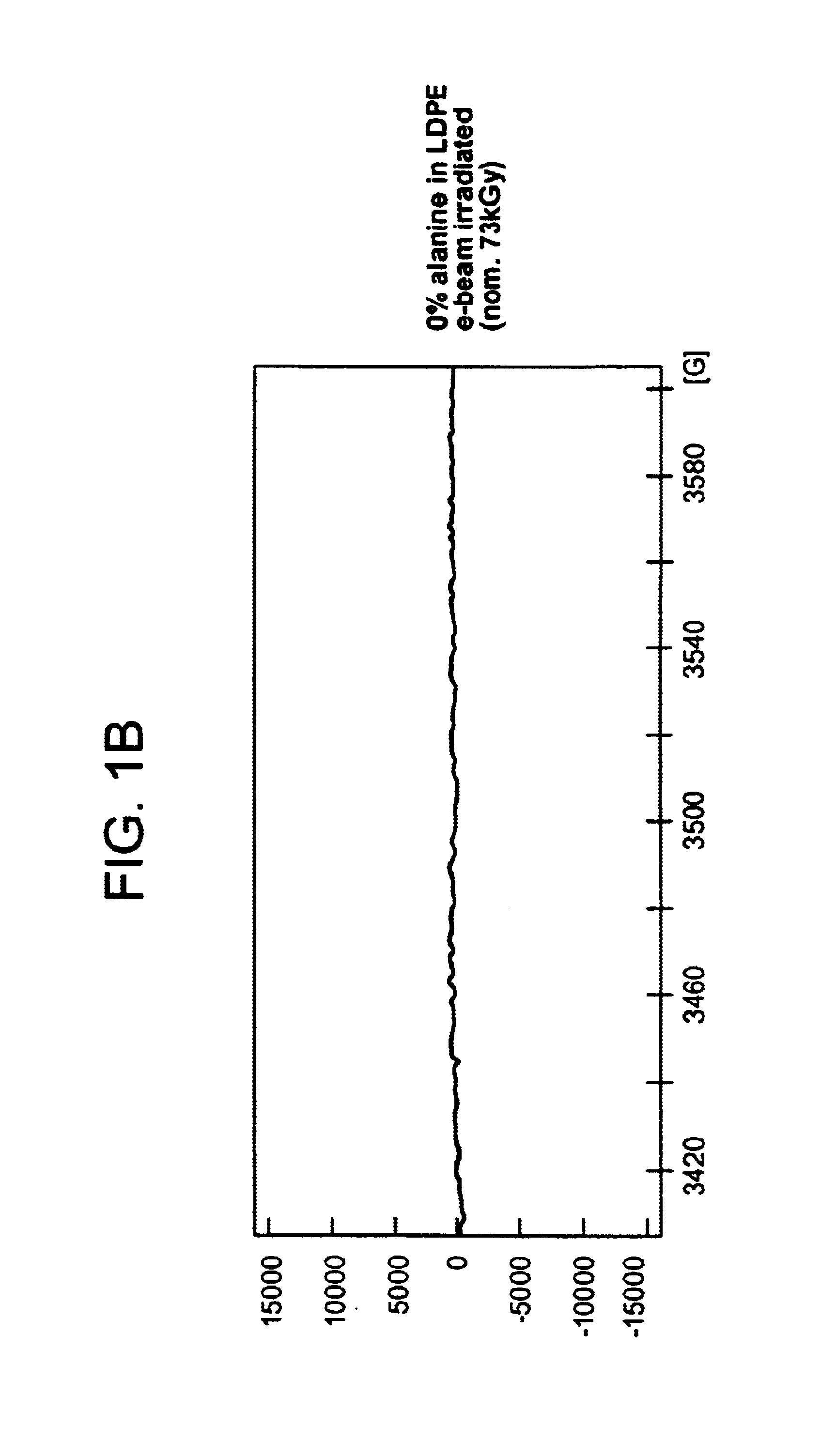Authentication system and methodology
a technology of authentication system and authentication method, applied in the field of authentication system and methodology, can solve the problems of counterfeiters not even knowing that such markers are being used, too much effort or expense,
- Summary
- Abstract
- Description
- Claims
- Application Information
AI Technical Summary
Benefits of technology
Problems solved by technology
Method used
Image
Examples
example 1
Commercially available L-alanine powder was ground to a mean particle size of roughly 5 .mu.m using a Microjet.TM. Fluid Energy mill and 1 g of the milled L-alanine was added to 99 g of Poly-Eth.TM. 1017 LDPE resin (Chevron Corp; San Ramon, Calif.). This mixture was pulverized in a Certiprep.TM. 6750-115 freezer mill (SPEX, Inc; Metuchen, N.J.) in a liquid N.sub.2 atmosphere at approximately -90.degree. C.
The resulting powder was melted and pressed into a film having a thickness of several mils using a Model C Carver Laboratory press (Fred C. Carver, Inc; Menomonee Falls, Wis.). A control film was also prepared in the same manner, but with a composition of 100% LDPE (i.e., no alanine). Both films were irradiated with electron beam radiation under controlled conditions of amperage and exposure time to deliver to a nominal dose of 73 kGy, to activate the alanine. These conditions had previously been calibrated against standards in collaboration with the National Institute of Standards...
example 2
100 ppm of L-alanine was added to a bottle cap liner formulation including 70% LLDPE, 15% ethylene / propylene copolymer, 7% ethylene / propylene rubber and 8% mineral oil. Prior to blending, commercially available L-alanine powder was ground to a mean particle size of roughly 5 .mu.m as described in Example 1. The alanine modified formulation was blended directly in a single screw laboratory extruder (Baker Perkins Chemical Machinery; Stoke-on-Trent, UK), pelletized and cold molded into a standard 28 mm diameter polypropylene bottle cap to form a sealing liner inside the cap. During compounding, the extruder temperature was maintained between 120.degree. C. and 140.degree. C. Control liners were prepared in the same manner with the exception that L-alanine was not added to the bottle cap liner formulation.
Two control and two test bottle caps, complete with liners, were irradiated with .gamma. radiation at a dose of 25.7 kGy to activate the L-alanine, if any, to a detectable free radica...
example 3
Portland cement, sand and water were mixed to form a slurry. To this slurry was added 100 ppm of L-alanine based on the dry weight of the slurry. The resulting mortar mixture including alanine was allowed to harden at room temperature over seven days in a 100% humidity controlled environment. A control mortar sample was also prepared in the same manner but without L-alanine. Once the tests and control mortar samples had hardened, they were irradiated with .gamma. radiation at a dose of 234 kGy to activate the L-alanine, if any, to a detectable free radical state. The irradiations were performed as in Example 2.
These samples were analyzed via ESRS as described in Example 1. The analyst performing the ESRS analysis did not know which cement sample was a test sample and which was a control sample. ESRS data analogous to that shown in FIGS. 1A, 1B, and 1C was obtained and the test and control mortar samples were readily differentiable. Specifically, the irradiated cement including alani...
PUM
 Login to View More
Login to View More Abstract
Description
Claims
Application Information
 Login to View More
Login to View More - R&D
- Intellectual Property
- Life Sciences
- Materials
- Tech Scout
- Unparalleled Data Quality
- Higher Quality Content
- 60% Fewer Hallucinations
Browse by: Latest US Patents, China's latest patents, Technical Efficacy Thesaurus, Application Domain, Technology Topic, Popular Technical Reports.
© 2025 PatSnap. All rights reserved.Legal|Privacy policy|Modern Slavery Act Transparency Statement|Sitemap|About US| Contact US: help@patsnap.com



